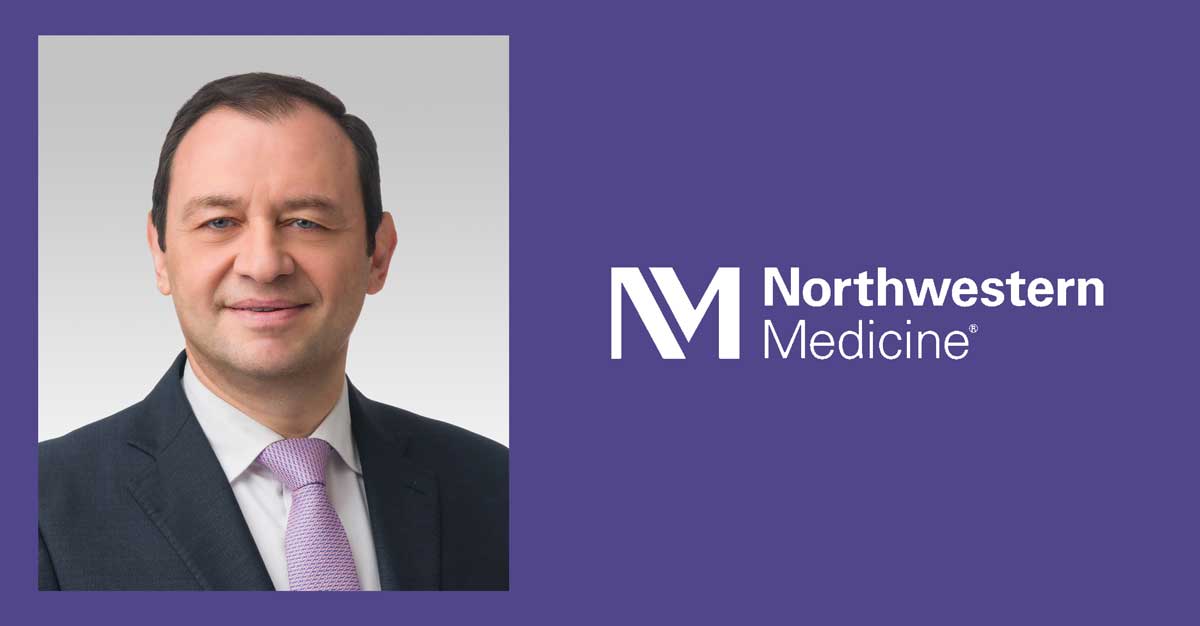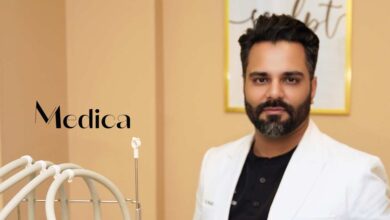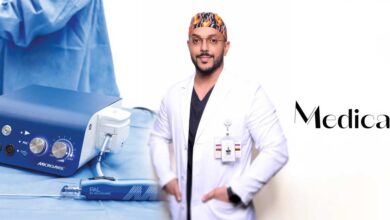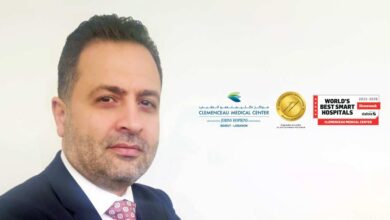Dr. Momen Wahidi
Medical Director, Canning Thoracic Institute, Northwestern Medicine
Redefining Lung Care

In a time when respiratory diseases are surging, driven by post-COVID complications, rising air pollution, and an aging population, Northwestern Medicine is leading the charge in innovative lung care. At the helm of this mission is Dr. Momen Wahidi, an internationally recognized interventional pulmonologist and the Medical Director of the Canning Thoracic Institute. In this exclusive interview with Hospitals Magazine, Dr. Wahidi shares how multidisciplinary care, groundbreaking lung transplant programs, and cutting-edge minimally invasive technologies are transforming outcomes for patients with the most complex pulmonary conditions.
Dr. Wahidi, please tell us about yourself?
I’m an interventional pulmonologist with 20 years of experience. I joined Northwestern Medicine two years ago as Medical Director of the Canning Thoracic Institute, overseeing lung care across 11 hospitals.
How does Northwestern approach care for patients with complex lung diseases?
Through a multidisciplinary approach. We build care teams that include pulmonologists, rheumatologists, surgeons, nutritionists, social workers, and others to manage every aspect of a patient’s health.
Are there treatments available before needing a transplant?
Yes. We use advanced techniques like robotic bronchoscopy and endobronchial ultrasound for early diagnosis and staging.
We’re also seeing progress with inhaled medications and biologics.
What makes Northwestern a leader in lung transplant?
We’re the top center in the U.S. by transplant volume and the first to offer post-COVID and cancer-related lung transplants. Our DREAM program offers hope to patients with advanced lung cancer limited to the lungs.
What are the most common reasons for lung transplant today?
Severe COPD, interstitial lung disease like pulmonary fibrosis, and in some cases, lung cancer. We’re proud to be the first center globally offering lung transplants for advanced lung cancer cases.
What are the main challenges in performing lung transplants, and do they involve living donors?
One of the biggest challenges in lung transplantation is proper patient selection. Not every patient qualifies, so a thorough evaluation is essential to ensure they are fit for surgery and free of contraindications.
Lung transplants do not involve living donors; we rely entirely on deceased donors, often individuals who have experienced catastrophic events but had healthy lungs.
We are deeply grateful to these donors and their families for their life-saving generosity.
What does the recovery process look like for patients after undergoing a lung transplant, including hospital stay, survival rates, rehabilitation, follow-up care, and physical activity?
Recovery following a lung transplant is a comprehensive and carefully monitored process that begins with a hospital stay lasting approximately 13 to 14 days, including several days in the intensive care unit.
During this critical period, patients are closely observed to manage potential complications and stabilize organ function. Once discharged, the focus shifts to meticulous follow-up care. This phase involves regular visits, bronchoscopies, and infection management protocols due to the essential use of immunosuppressants.
At Northwestern Medicine, our multidisciplinary team has achieved a remarkable one-year survival rate of around 90%; a testament to the excellence of our comprehensive care approach. Equally vital to recovery is rehabilitation, which plays a pivotal role throughout the entire journey. It starts even before surgery, addressing pre-existing symptoms, and continues post-operatively to help patients regain strength, mobility, and lung function. To further support patients during this transition, we provide both in-person and telehealth follow-up appointments. Additionally, we incorporate home spirometry tools for remote monitoring, allowing us to track lung function in real time. For added convenience, our suburban hospital services extend care closer to patients’ homes.
Lastly, physical activity is another key component of the recovery process.
Exercise regimens are personalized to each patient’s specific needs and capabilities, with a focus on gradual but consistent movement. This structured, individualized approach not only aids in the healing process but also fosters long-term health and overall quality of life.
Do you support international patients?
Yes. We work closely with our international office, which handles coordination, language support, and cultural sensitivity. We also have partnerships in the UAE and beyond.
Would your team travel abroad for transplants?
We’re open to it; if the local infrastructure supports long-term care. We can assist with program development, training, and surgery collaboration in regions like the UAE.
What advice would you give young doctors interested in this field?
It’s an incredibly fulfilling specialty. There’s rapid advancement in tech like robotics and AI, but also growing public health risks like smoking and vaping.
Preventive care and patient education; especially about shisha and vaping; must be prioritized.














